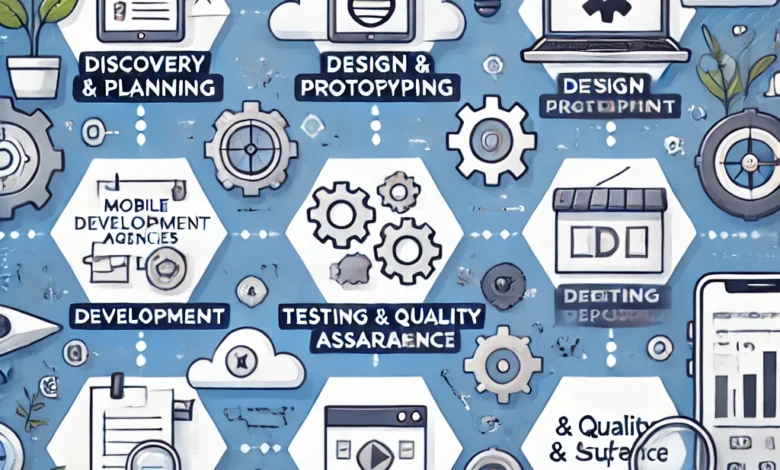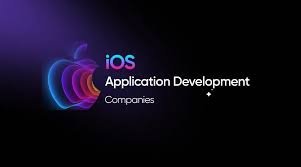How Mobile App Development Agencies Work: A Step-by-Step Process

In the fast-paced world of mobile app development, agencies play a crucial role in transforming ideas into functional, market-ready applications. These agencies offer expertise in coding, design, user experience (UX), and project management, ensuring that businesses get a product that meets their needs. If you’re planning to build a mobile app and want to know how a mobile app development agency works, this article will walk you through the entire process step by step.
Step 1: Initial Consultation
The first step in working with a mobile app development agency is an initial consultation. This is where the client and the agency meet to discuss the app’s concept, goals, and requirements. The purpose of this phase is for the agency to gather key information and for the client to express their vision.
During the consultation, the agency will ask important questions, such as:
- What problem will the app solve?
- Who is the target audience?
- What features should the app include?
- What platforms (iOS, Android, or both) will the app be released on?
- What is the timeline for the project?
- What is the budget?
Based on the answers, the agency starts to form a high-level view of the project and can propose a general approach for its development.
Step 2: Project Scoping and Proposal
After the initial consultation, the agency will move to the next phase: defining the scope of the project. This involves clearly outlining all the features, functionalities, and design elements that the app will require. This is an essential step to ensure that both parties are on the same page about expectations and deliverables.
During this phase, the agency will also create a proposal that includes:
- Timeline: A detailed breakdown of the stages involved in the full cycle software development process, including milestones and deadlines.
- Budget: A cost estimate for the entire project, broken down by each phase (design, development, testing, etc.).
- Deliverables: A list of the specific outcomes expected from each phase.
- Technology Stack: The programming languages, frameworks, and tools the agency will use to build the app.
This proposal acts as a contract of sorts, helping to set expectations for both the client and the development team.
Step 3: Wireframing and Prototyping
Once the project scope is confirmed and the proposal is agreed upon, the next step is to begin designing the app. The design phase often starts with wireframing, which involves creating a skeletal blueprint of the app’s layout and functionality. This provides a visual representation of how the app will look and how users will navigate through it.
Wireframes are typically low-fidelity, focusing on layout and functionality rather than aesthetics. They help establish the structure before moving into high-fidelity design.
After wireframing, the agency may develop a prototype—a more advanced version of the wireframe that simulates how the app will function in real life. Prototypes allow stakeholders to interact with the app’s interface, providing valuable feedback on usability and design. It is common for the agency to iterate on the prototype based on client input during this phase.
Step 4: App Design and UI/UX Development
Once the wireframes and prototype are approved, the app moves into the full design phase. At this stage, the agency will focus on the visual aspects of the app, including its color scheme, typography, icons, and branding. The goal is to create a visually appealing app that aligns with the client’s brand identity.
This stage involves a mix of design principles, such as:
- User Interface (UI) Design: Creating a visually engaging layout and interface that is easy to navigate.
- User Experience (UX) Design: Designing interactions that are intuitive, ensuring users can accomplish tasks without confusion or frustration.
UI/UX designers work closely with the client to refine and perfect the app’s look and feel, often revising designs until they meet the client’s expectations.
Step 5: Development
With the designs finalized, the development phase begins. This is where the app starts to take shape in terms of functionality. The development process is typically divided into two main stages: front-end and back-end development.
Front-End Development:
This involves coding the parts of the app that users interact with directly, such as the user interface, navigation, and visual elements. Front-end developers use languages like Swift (for iOS) and Kotlin (for Android) to build the app’s interactive elements and ensure they work across various devices and screen sizes.
Back-End Development:
This stage focuses on the server-side components of the app, such as databases, APIs, and cloud infrastructure. Back-end developers ensure that the app can perform tasks like storing data, sending notifications, and processing user requests. They typically use languages like Java, Python, or Ruby for back-end programming.
During development, the agency will also integrate third-party services, such as payment gateways, authentication systems, or analytics tools, depending on the app’s requirements.
Step 6: Testing
Testing is one of the most critical steps in the app development process. The goal is to identify and fix any bugs or issues before the app is released to the public. Mobile app testing includes various types of tests, such as:
- Unit Testing: Ensuring individual components function as expected.
- Integration Testing: Testing how different parts of the app work together.
- Performance Testing: Verifying that the app performs well under different conditions, such as varying network speeds or heavy user loads.
- Usability Testing: Ensuring the app is intuitive and user-friendly.
- Security Testing: Identifying potential vulnerabilities and ensuring user data is protected.
- Device Testing: Testing the app on a variety of devices and screen sizes to ensure compatibility.
Throughout the testing phase, the development team will address any issues and refine the app to ensure it works seamlessly.
Step 7: Launch
Once the app passes testing, it’s time for the launch. The agency will assist with preparing the app for release on the appropriate app stores (such as the Apple App Store or Google Play Store). This process includes:
- App Store Optimization (ASO): Writing descriptions, adding keywords, and creating screenshots that will make the app stand out on the app store.
- Submission: The app is submitted to the app store for review. Both Apple and Google have specific guidelines, and the app must meet these before it can be published.
- Deployment: Once approved, the app goes live and becomes available for download.
During the launch, the agency may also help with marketing efforts, such as announcing the app’s availability on social media or collaborating with influencers to promote the app.
Step 8: Post-Launch Maintenance and Updates
The work doesn’t end once the app is launched. In fact, the post-launch phase is crucial for ensuring the app continues to perform well and meets user expectations. Mobile app development agencies typically offer ongoing maintenance and support services, which include:
- Bug Fixes: Addressing any issues that arise after launch, including fixing crashes or broken features.
- Updates: Releasing regular updates to improve functionality, fix bugs, or introduce new features.
- Performance Monitoring: Keeping track of the app’s performance and addressing any issues that affect user experience.
- User Feedback: Monitoring reviews and feedback from users to identify areas for improvement.
Continual updates and support help keep the app relevant and competitive in an ever-changing market.
Conclusion
Mobile app development is a complex process that involves many stages, from initial consultations to post-launch maintenance. Working with an agency allows businesses to leverage specialized expertise in design, development, and project management. By following a structured, step-by-step process, app development agencies can deliver high-quality apps that meet the needs of both the client and the end-users.
Each stage in the process builds on the previous one, ensuring that the app is not only functional but also intuitive, secure, and optimized for a smooth user experience. Whether you’re looking to develop a simple app or a more complex solution, collaborating with a mobile app development agency provides the necessary resources and guidance to bring your vision to life.




